
There’s a lot to go over with Chevy’s Silverado EV, but what makes it really unique is the huge 200+kWh battery and the 450+ mile range that it provides. But that monster battery also has a few well disguised drawbacks, including putting the truck at a whopping 8500 lbs. Let’s dive in…
Chevy flew us out to Ann Arbor to learn about the Silverado EV work truck and then off to a local farm to see the Silverado in its native habitat, complete with country music and BBQ. There we got to tow a 10,000 lb. John Deere tractor, head out on some dirt roads, and drive the Silverado through some small towns with even smaller parking spots.
Then we got to speak to some of the experts on Chevy’s team about the nuances of this vehicle. There is a ton going on here, but by far the biggest differentiator between this vehicle and the competition is the huge battery and the subsequent 450+ miles of range. I use the ‘+’ because throughout most of the testing, I was seeing greater than 450 miles of range sometimes close to 500 miles in very normal around town usage, similar to what a fleet work truck would do in a typical day; obviously when towing, that range gets cut as much as in half. But when starting out so high, all of a sudden towing long distances becomes way less stressful.

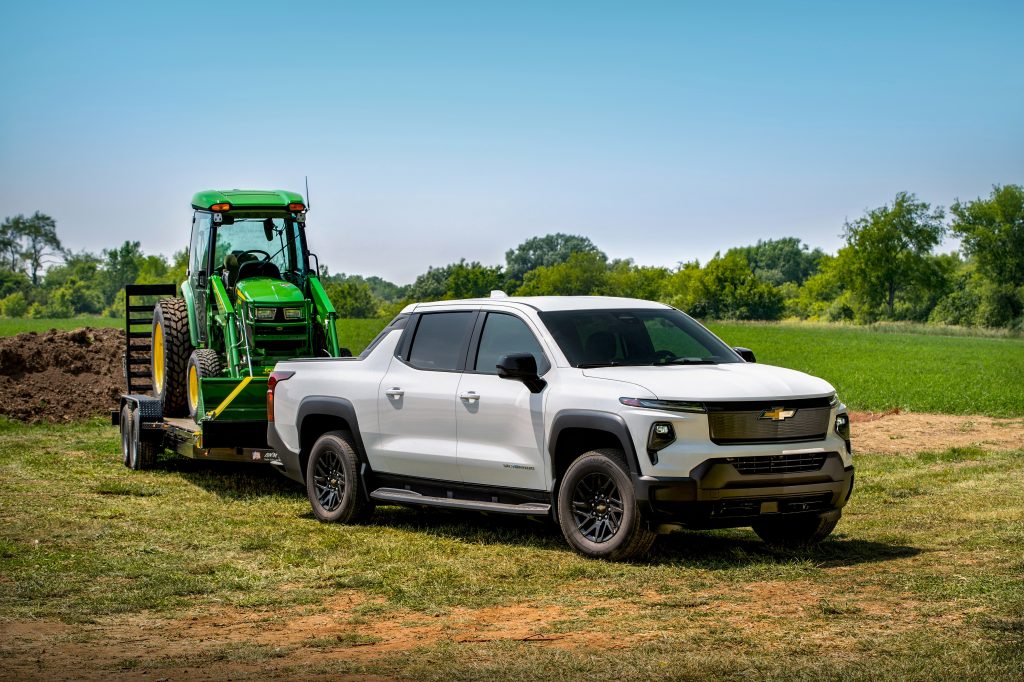
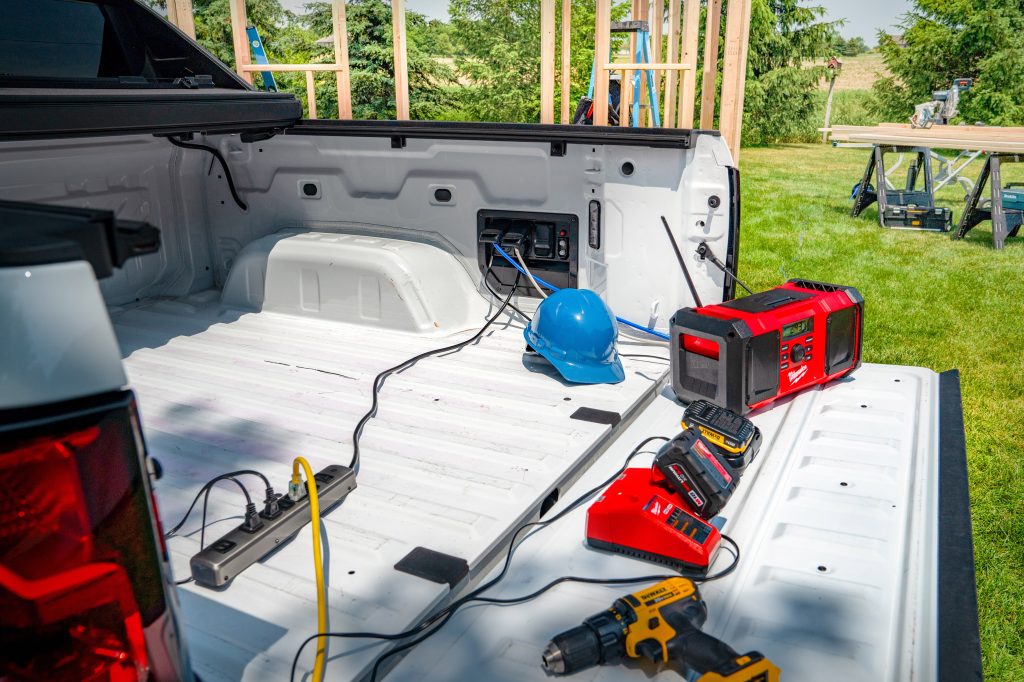

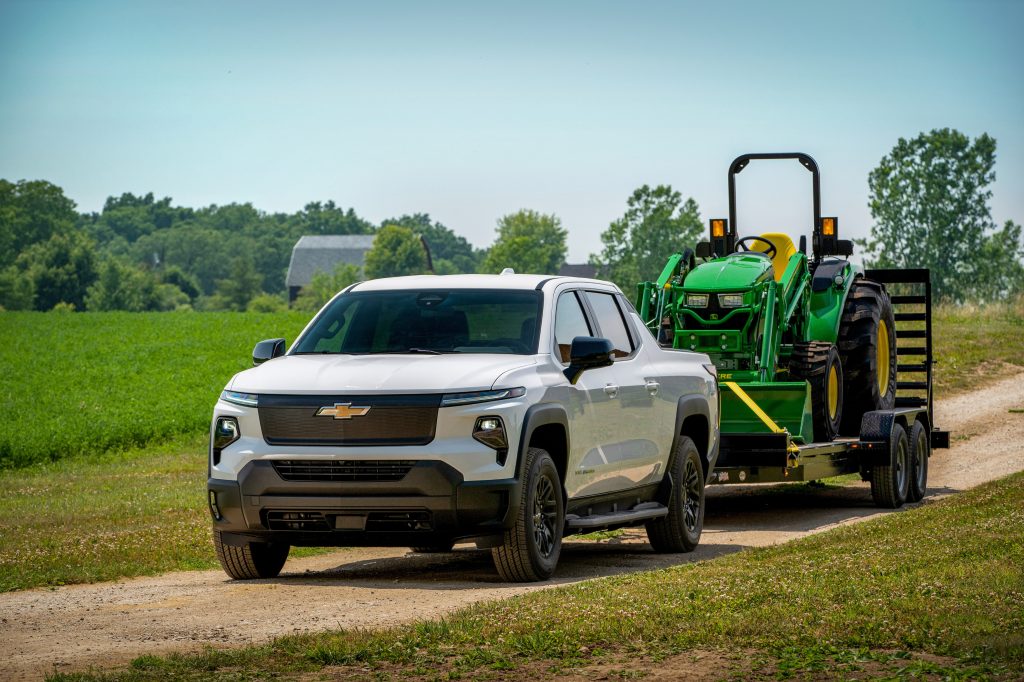
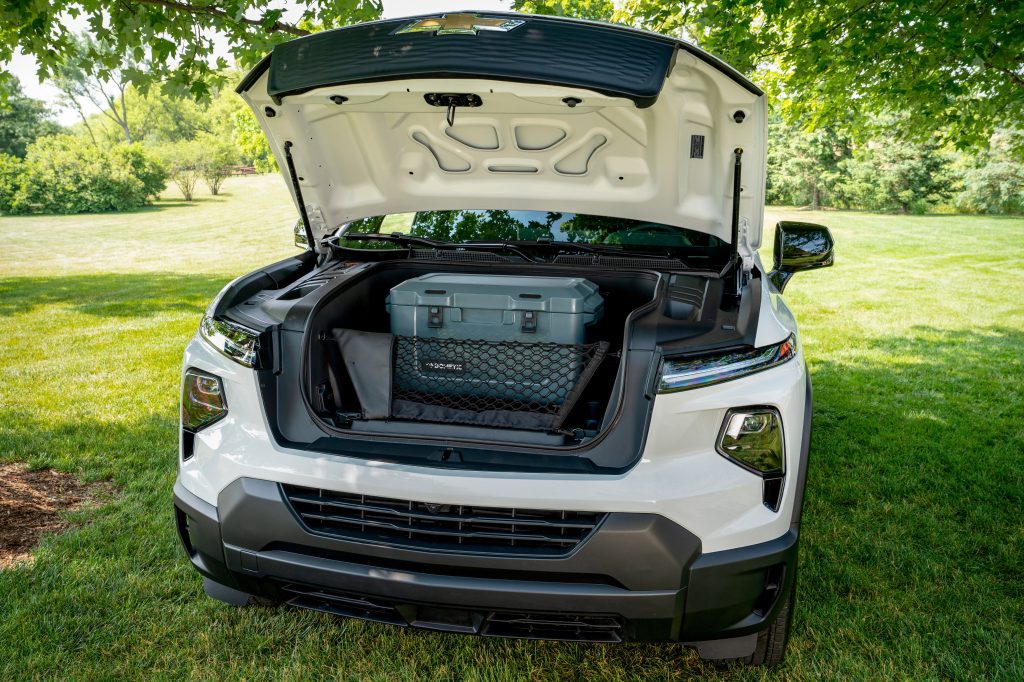
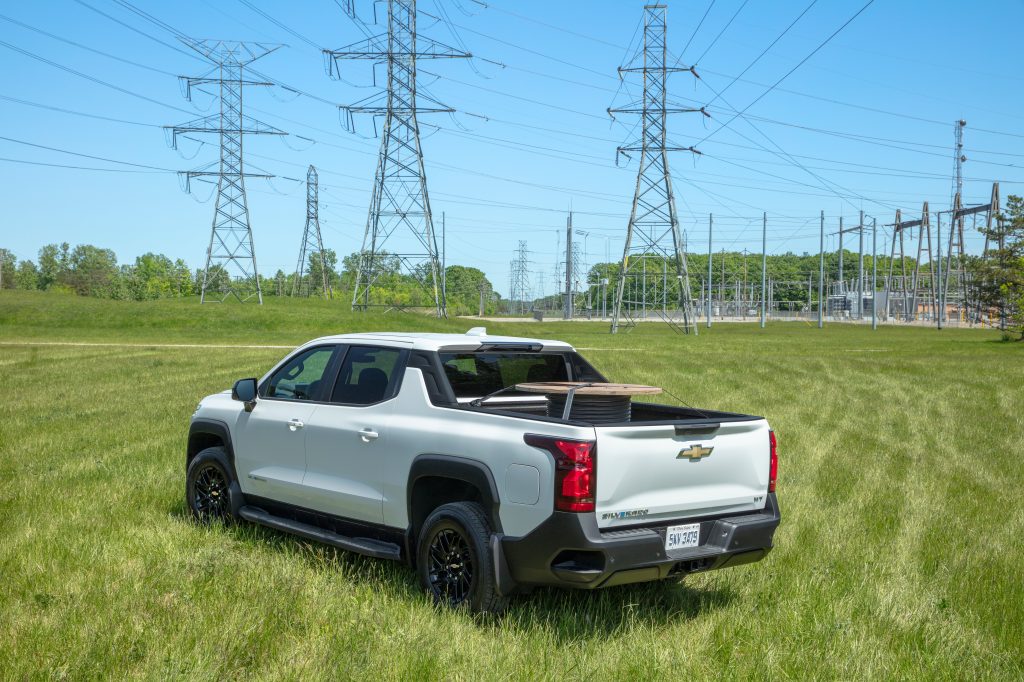
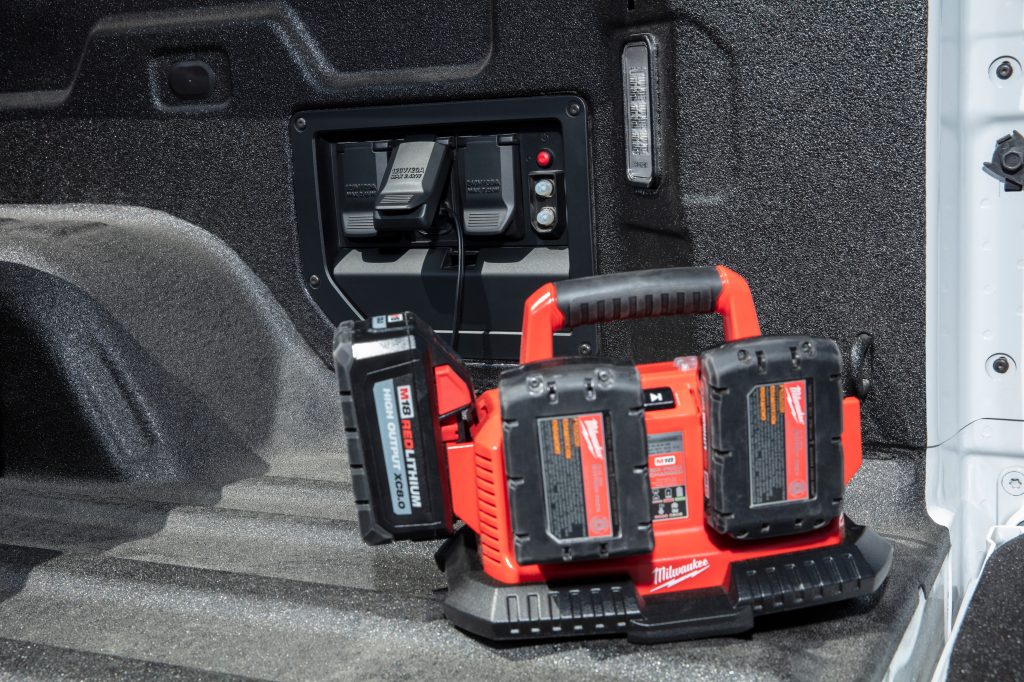
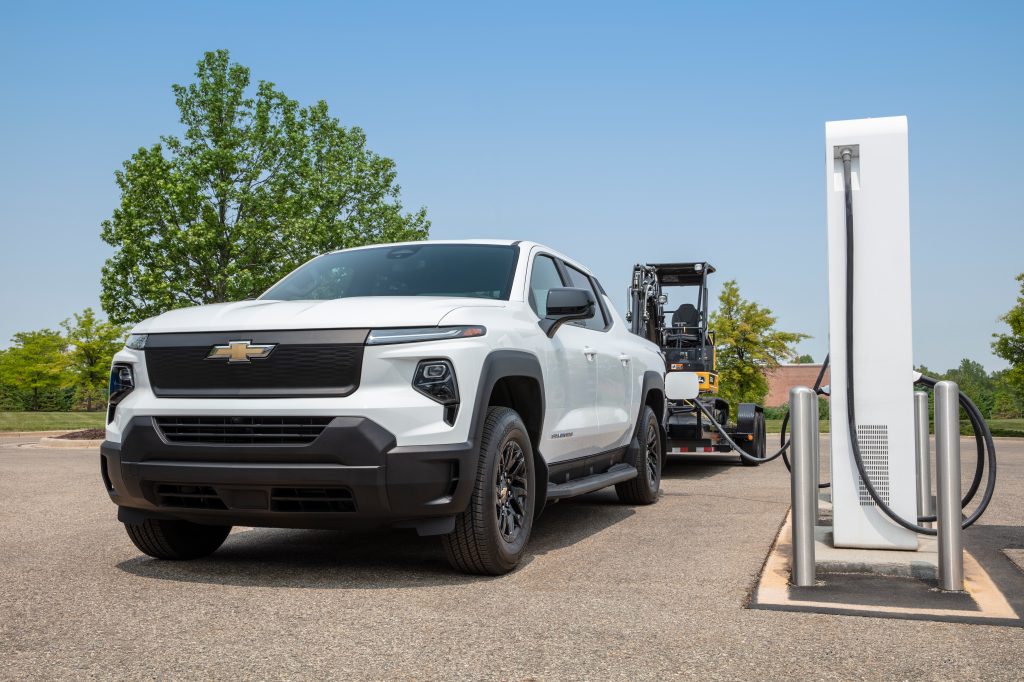



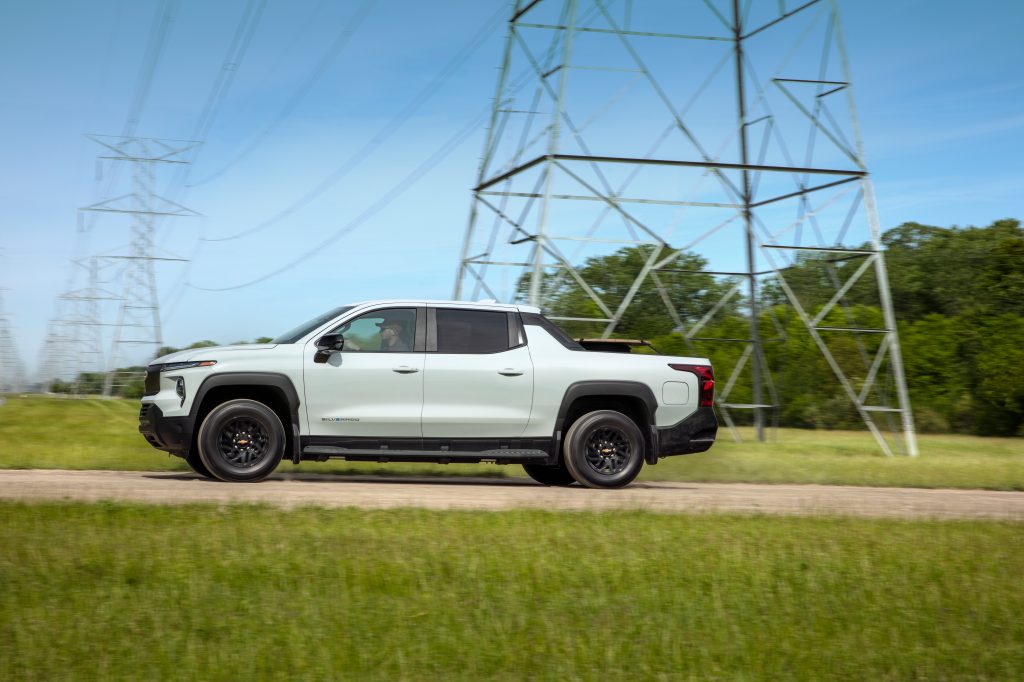

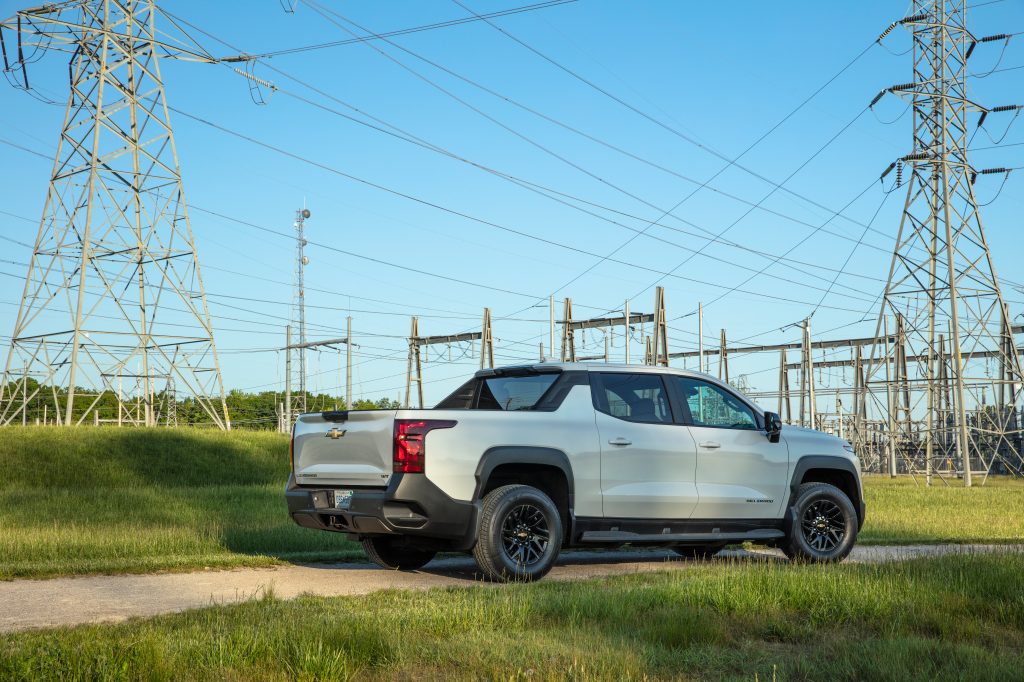

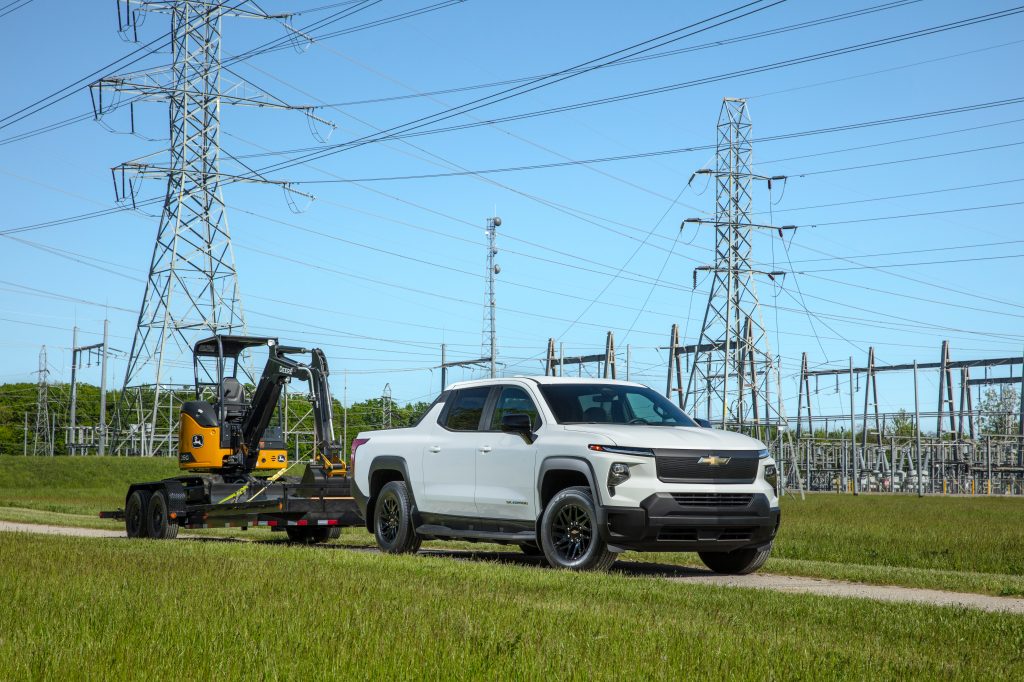
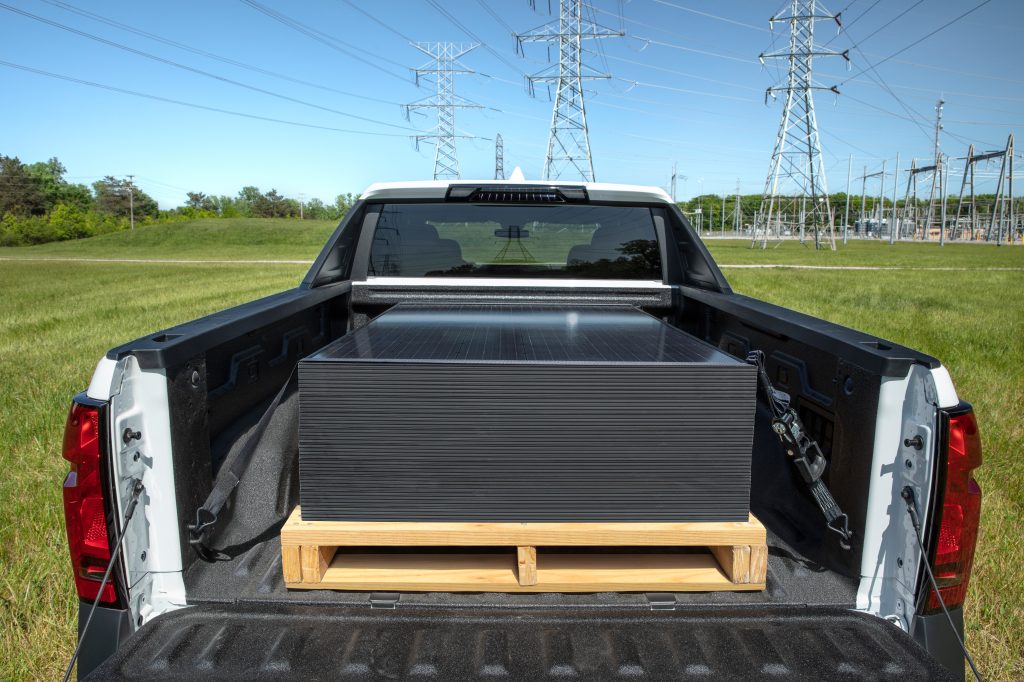
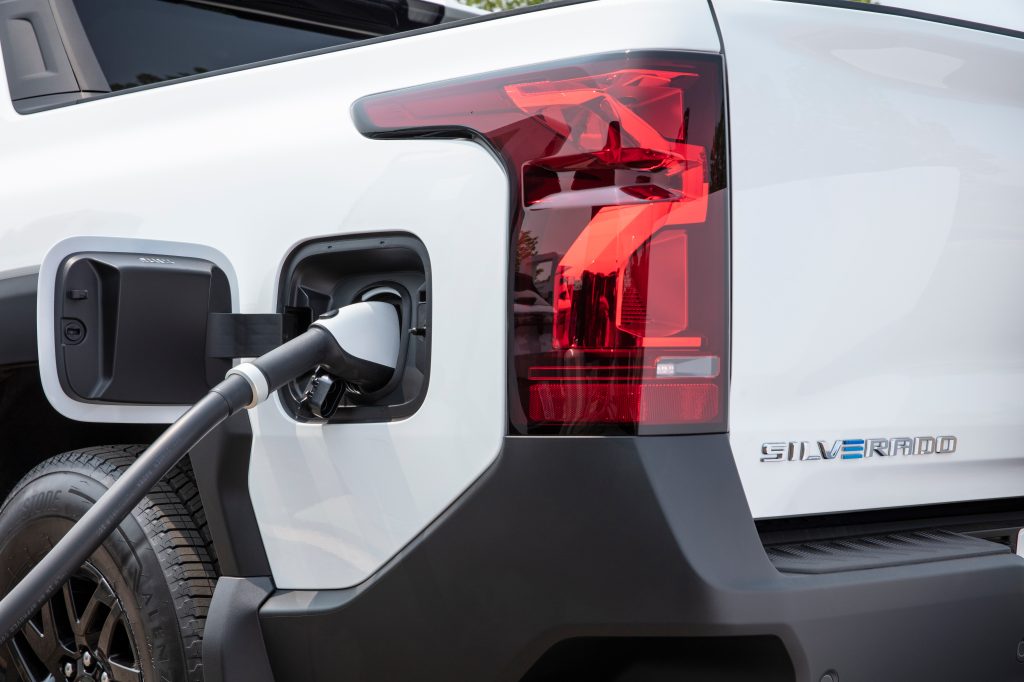
The downside of that huge battery is the weight and size. The driving dynamics were super impressive however, even on dirt roads. Chevy recommends a surprisingly high 61 PSI on the wheels and ours were showing 63 PSIs, yet the ride was incredibly smooth. Still, however, you are schlepping around a 200kWh battery everywhere which consumes a lot of extra energy and the inertia of a 8500 lb. vehicle becomes all that much more dangerous in an accident.
Silverado EV has 50% more battery than F-150 Lightning or Rivian R1T
There’s no denying the standout feature of the Silverado Work Truck is its huge, honking 200+kWh battery. To put it into perspective, it is 50% bigger than Ford’s F-150 Lightning long range battery at 131kWh and double the under 100kWh standard range battery. That’s an extra vehicle battery on top of an F-150 Lightning battery (Chevy’s Bolt is 65kWh for instance). Rivian clocks in slightly higher at 135kWh but that’s a rounding error, and its upcoming Max battery pack still falls significantly short at 180kWh.
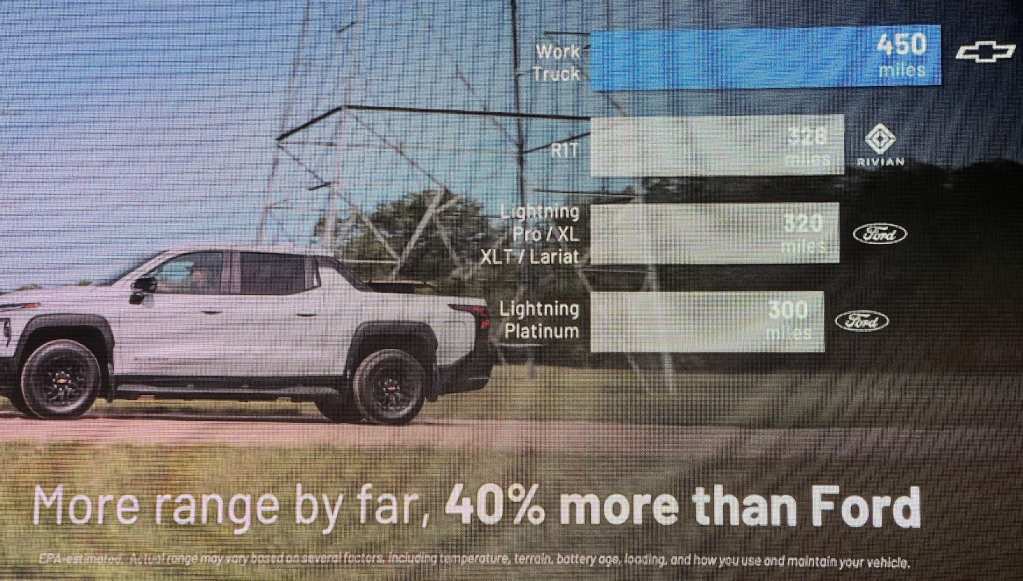
That incredible Silverado 450 mile range isn’t just from battery alone however. It has the same size battery as the GMC Hummer EV which has a 329 mile range.
Curiously, Chevy was super-coy about the battery size and kept saying it was different than the Hummer EVs though they did concede it as the same module and kWh spec.
How did Chevy eek out a whopping 121 miles from the same size battery?
Well first of all, the Hummer EV isn’t an exercise in efficiency. Its huge tires, gaping drag coefficient, removable roof and absurd 10,000 lb. weight make a lot of low hanging fruit when optimizing.
But Silverado also has smaller, more efficient (and one fewer) motors. So this isn’t a speed burner with a mid-5 second 0-60 but will be fine for just about anyone. When towing 10,000 lbs., however, I had an 11+ second 0-60 time which might be troublesome for getting on highways, especially uphill.
The aerodynamics aren’t just good but they made “one of the most efficient trucks ever” with a .331 drag coefficient. Rivian claims a lower flat, .3, but both are great aero trucks.
Silverado EV Work Truck also drops almost a literal ton of weight from the Hummer EV with some simplicity which also helps with cost savings. Also we saw up to 180kW of regeneration power when using the 1 pedal driving mode and even higher with a trailer attached. That adds up.
Chevy Pro Power on Board Offboard power
The power system for these EV trucks still fascinates me even if we’ve mostly “seen this before.”
Chevy basically replicated Ford’s extremely popular power station on board. It is a similar amount of power 10kW in similar places – Rear bed, Interior, charging port and Frunk (Chevy calls it the E-Trunk but even the experts, see above, were calling it a “frunk”).
Overall you get 10.2kW of power including a 30A, 7.2kW generator plug output that can manually backup your home at launch. Chevy is working on something similar to Ford’s automatic home backup through the charging port and expects to have something that will coincide with the launch of the RST at the end of this year.
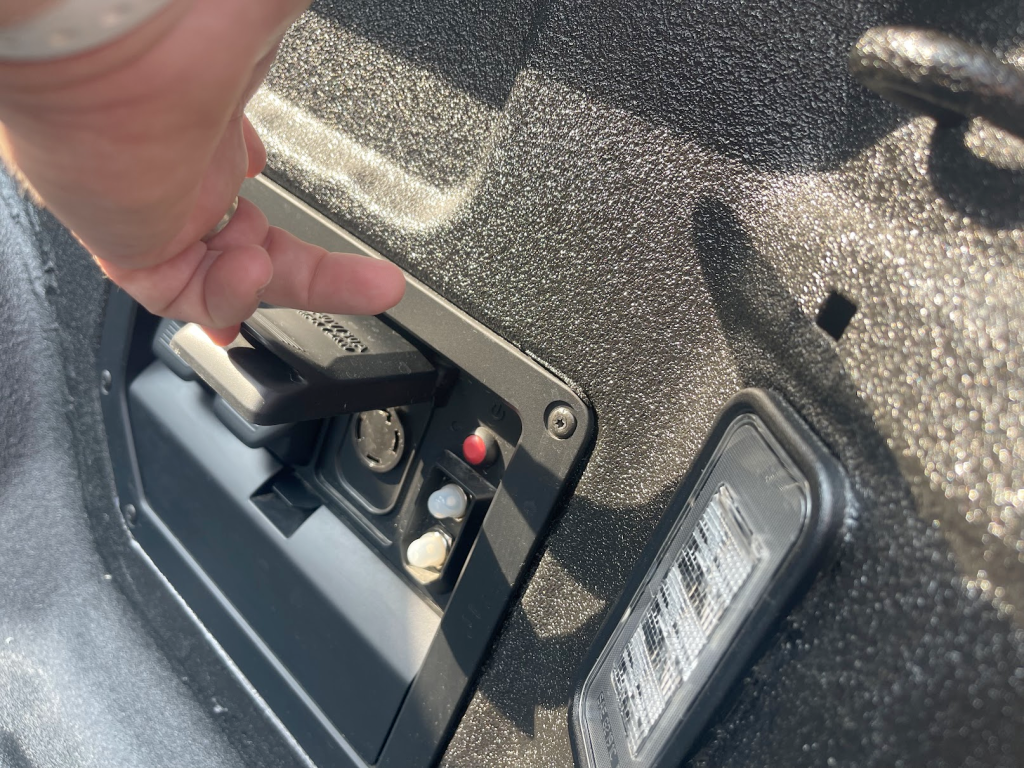
For the moment, however, Chevy does have some cool charge port accessories like the 6kW charger cable that will charge another vehicle (one would assume you could also charge a vehicle using the 7.2kW generator port with an adapter). It also has some neat add-ons like charging port powerstrips with different charging options including the RV favorite NEMA TT-30 30A 110V plug.
To show its prowess, Chevy ran the two food trucks from its off board power, without breaking a sweat and barely registering on battery usage. This truck has enough power to run multiple food trucks for days while subtracting the traditional loud running, petroleum spewing power generation which isn’t a great pairing with food preparation and consumption.
Silverado EV pricing
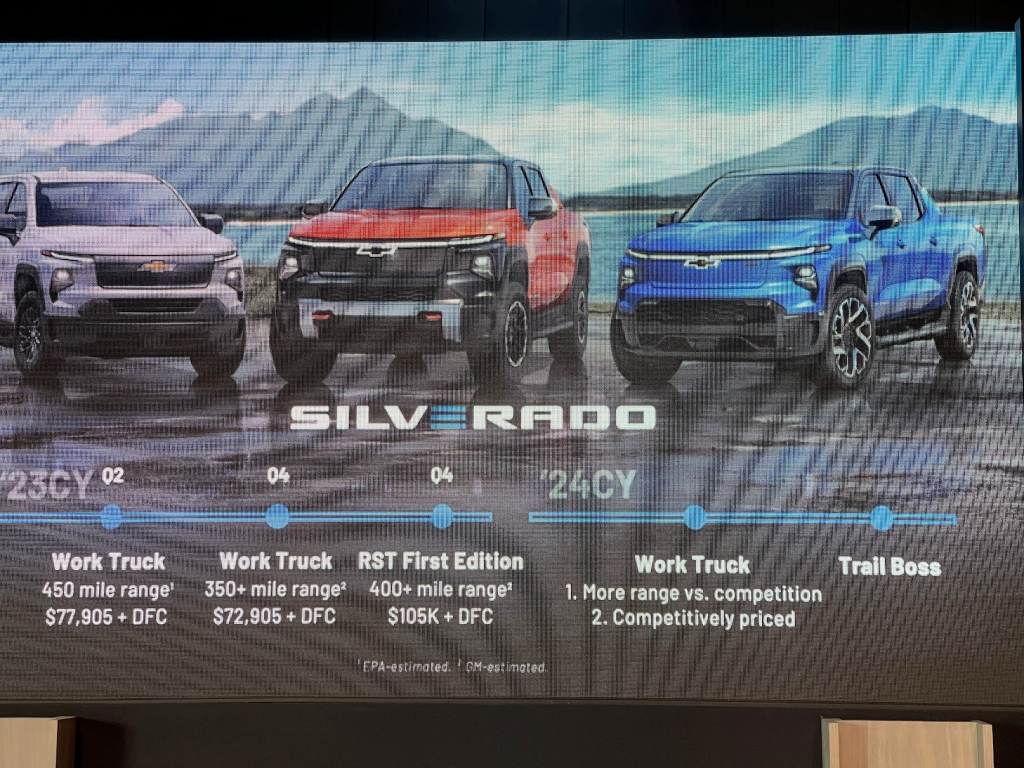
Let’s start with the bad news: To everyone’s shock and surprise (/s), Chevy will not be selling a Silverado EV starting under $40,000 like they originally planned. I’m not sure how many of the 185,000 reservation holders were banking on that but with a few years of inflation, parts shortages, delays, etc, here we are. I do think that they will get into the $50+K range starting next year when they offer a significantly lower range model Work Truck. After incentives that will get close to $40K. Chevy says range and price will be competitive with Ford’s standard offerings which currently start at 230 miles/100kWh and $55K.
The 450-mile work truck we drove will start at $77,905 and be available to fleets in the coming weeks. That’s notably a few weeks later than Chevy’s planned “spring rollout,” but compared to the years of delays Tesla has shown on its models like Cybertruck, it is just a blip. Meanwhile the slightly smaller battery 350+ mile Work Truck will debut at the end of the year with a $72,905 price tag.
Chevy Silverado RST First Edition
Also at the end of the year, Chevy will unleash the RST First Edition for a whopping $105K which is getting pretty close to a Hummer EV lite. Here’s a quick look at the RST which features the mid-gate for increased storage and a whole lot of other options. I imagine a large percentage of our audience is here for this:
E-Trunk is a Frunk

Just like the F-150, Chevy’s Silverado has a large frunk, but again, they are giving it a name which won’t stick called the “E-trunk” (Being a first mover has its advantages). While notably smaller than the F-150 – 14 cubic feet vs. 10 – it also offers a plug in front for charging tools even while driving or idle via the app. Chevy said those wider sidebars were to house a better front suspension than Ford’s. I think for most work uses, 10 cubic feet will be enough, but for a few this might be a dealbreaker.
Silverado DC Fast charging at 350kW
On every EV drive, one of the first places I go is the DC fast charging station, even if it isn’t on the itinerary (it never is).
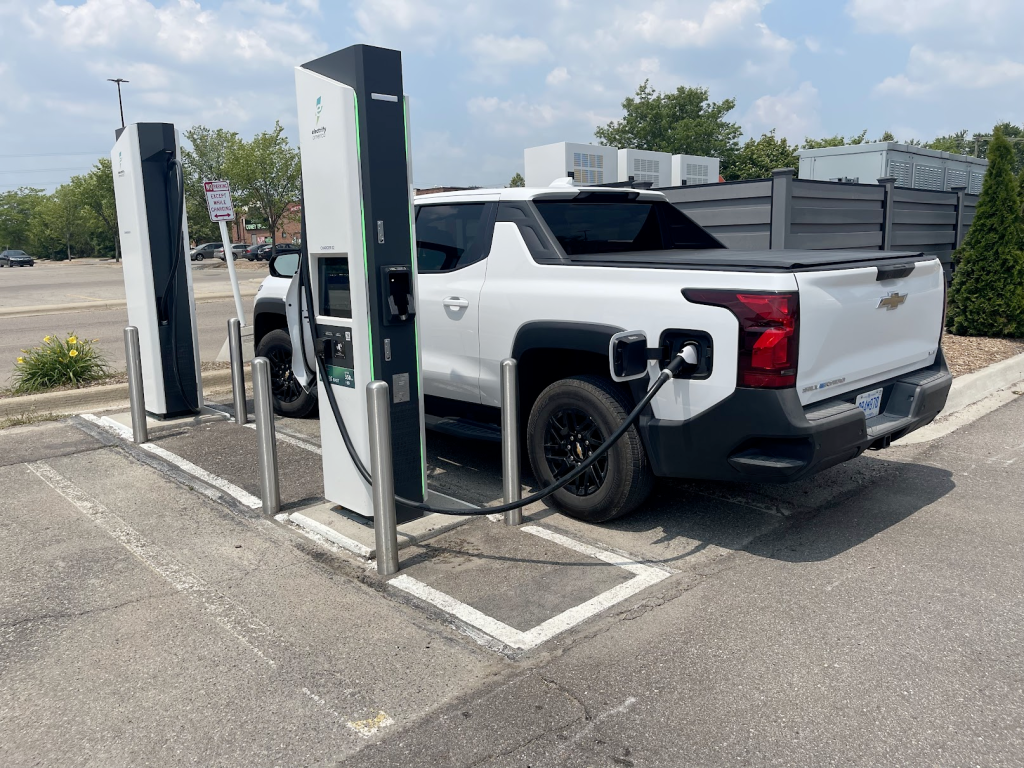
We were only given vehicles with over 50% charge, but I still wanted to see what kind of speed I could get out of an EA station and maybe piece together a charging curve. From 61-63% charge, it charged steady at about 208kW, which is an impressive speed until you realize it would take an hour to fill a full battery at that speed. Of course the charging will be much faster at the beginning and much slower at the end of the charge. Chevy put together this small clip on the matter:
And that’s the thing about having a huge battery like this: you can charge it at really high power, but it still takes a long time to really fill up. Chevy says at its fastest pace, you can add 100 miles in 10 minutes. Condolences if there’s only a 50kW fast charger around – that’s a 4+ hour “fast” charge to go from empty to full.
Home and work level 2 AC charging goes up to 80A here which will take over 10 hours to go from empty to full. On a more typical 40A charger, it will take 20 hours, but again that’s adding over 450 miles of range. Most fleet truck scenarios draw way less power in a day so 40A is probably sufficient to add ~300 miles in a 12 hour night.
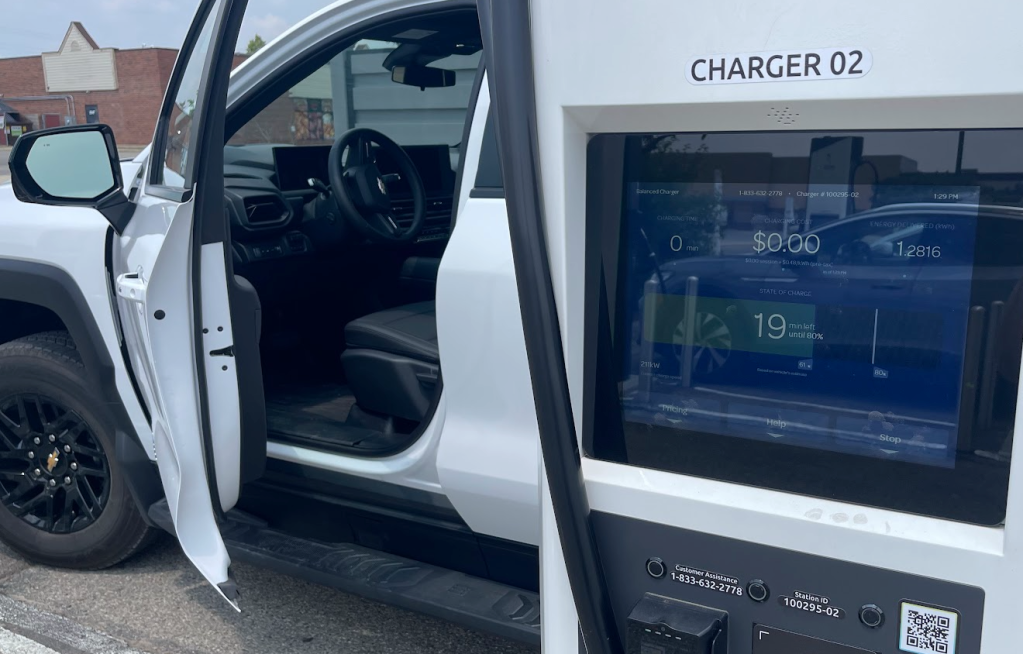
Silverado EV Drive dynamics
Maybe the biggest surprise of the Silverado EV, besides its range, is its ability to drive like a commuter car (not that it should be used for commuting!) I was shocked at how easy it is to drive and how quick my stress levels went down to a typical car levels. The car drives smooth and is very responsive for an 8500-lb beast with 61+ PSI tires. The suspension folks at GM should be commended. It should not be this easy to drive an 8500-lb vehicle!
Turning is satisfactory, but I can’t help but think 4-wheel turning should be an option in the Work Truck like the Hummer EV. Parking was tough and it took me an extra pass or 2 to slip into the EA station and parallel parking in town wasn’t fun. However, 4 wheel steering will be offered in higher end consumer versions of this truck.
Silverado EV interior
The Work Truck interior is what you’d expect from a work vehicle. Something you could hose down after a day in the mud. Dark plastic and vinyl as far as the eye can see, but in a good way.
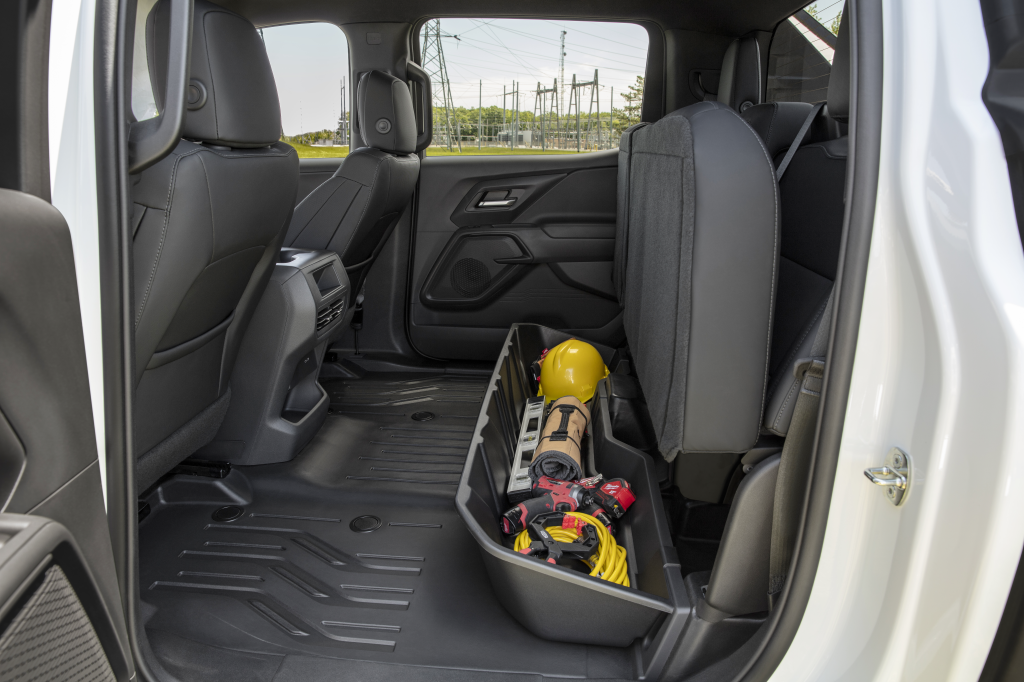
That doesn’t mean you can’t drive in comfort, and I found all four seats to be comfortable. Not once during the hours of driving did the driver’s seat feel uncomfortable. The sound system and front screen were fine, though nowhere as good as the RST version coming at the end of the year. Though it won’t come with a mid-gate option, the Silverado Work Truck does have ample storage under the rear seats and still sports the biggest-in-its-EV-class 5’11” long bed.
Carplay/Android Auto
One of Chevy’s most controversial recent moves was to announce the removal of the phone projection in its EVs. However the Silverado EV Work Truck, which still uses Google’s Android Car system, will allow projection of CarPlay and Android Auto, this year anyway. Interestingly its consumer facing Silverados starting next year won’t allow projection. I think this an easily correctable mistake by GM and you can tell that most at Chevy are taking a wait and see approach with the reception this decision gets.
Note: in the video above I was initially told CarPlay would be removed in a software update but it would only be “removed” in a model year update.
Electrek’s Take
For some workers who drive really long distances and have towing, cold weather, etc. requirements, this is the only electric pickup that will meet their needs. Not only did we hit 450 miles, but we often succeeded it with up to 485 miles shown in Chevy’s estimator, in my experience. Nothing else like it even comes close.
Top comment by Seth Weintraub
Just posting this for the people who are saying that a full sized truck is supposed to be full sized and yes heavy.
Yes, but there are downsides to that just like there are downsides to very small vehicles like roominess and crash protection.
This is a big f-ing vehicle. It is hard to park. It is hard to see kids, pedestrians and cyclists. Batteries are the bottleneck to EV adoption right now and you can make 3-4 Chevy Bolt batteries with this battery.
Shouldn't this be part of the conversation? Like is it off limits to explore these ideas?
But that capability of range isn’t free. Not only does the extra weight make for a more expensive truck that also costs a bit more on $/kWh. That 8500 lbs of weight also affects the handling though I will concede that Chevy suspension engineers worked miracles here.
So I wonder how many fleets actually need 450+ miles of range or even 350+miles. Sure it is nice to have for that rare instance, but it also means you are carting around and paying for a big, unused battery around town most of the time.
Then there’s the whole, why are people driving around 8500-lb. trucks when something like a Ford Maverick size vehicle will do. And we all know that there are a ton of these that are going to be used for commuting when a third of the sized vehicle with a third of the battery will do just fine. But that argument is for another day, and this Silverado EV will take a ton of ICE pickups off the road. And we’re here for that.
The Silverado EV is a super-compelling, no compromise work truck that will meet the needs of fleets that no other EV pickup can.
FTC: We use income earning auto affiliate links. More.


Comments